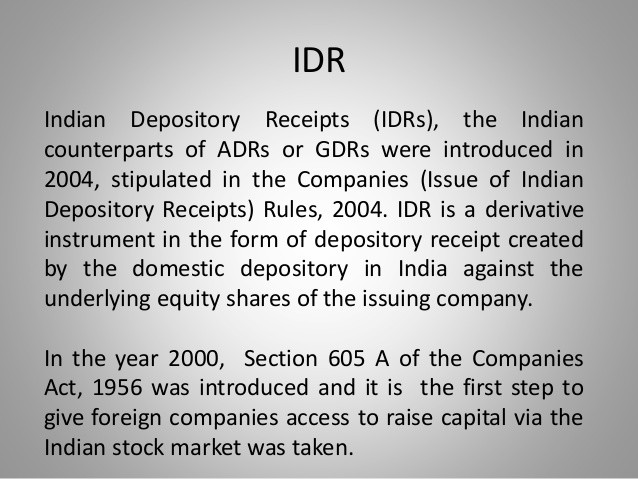American Depository Receipts An Introduction and Basic Primer
Post on: 17 Октябрь, 2015 No Comment

Introduction to American Depository Receipts (ADR)
If you have been trading for a while, you know that at one time, most of the international investing scene was closed to you. Unless you had a foreign brokerage account, your alternatives were limited to trading a handful of huge global companies, or an international index, and that it was usually lumped across regions like EAFE.
JP Morgan introduced the first depository receipt (DR) in the US market in 1927 to give US investors access to securitized, trading opportunities abroad. Like all global markets, the American version, the ADR, expanded significantly following its introduction. ADRs now include more than 2,000 tradeable securities in companies both large and small. Today, there are Global Depository Receipts (GDR), as well. Both ADRs and GDRs may be denominated in US dollars. Most GDRs trade on the European exchanges and they may also be denominated in Euro.
Although there are more than 2,000 ADRs, the average investor still won’t have access to them all. Thirty to forty percent of them are restricted in one of several ways. Some of them are restricted to private placements. Others only trade offshore. Most of those are traded by investment partnerships (aka hedge funds).
The remainder is divided into three categories in much the same way that that domestic US equities are. That is, by how much SEC regulation the issuing company is willing to tolerate. For example, Level III companies comply with much the same set of regulations as large US companies. Level II companies also register with the SEC and their ADRs can be bought and sold on the major US exchanges (NYSE, NASDAQ, AMEX).
Level I ADRs are only slightly less regulated. They don’t comply with the SEC’s rules, so they are only traded over the counter (OTC), but they do have to comply with the reporting and exchange rules in their home country. They are also required to make their annual reports both readily accessible and in English on their homepage. They aren’t exactly the same as US reports so they’re not directly comparable. However, they are consistent with the reporting rules in their home market, so the annual reports of a particular company tend to be comparable to each other over time. Much of the explosion in access to ADRs occurred after 2008, when the SEC changed its rules.
Presumably, you wouldn’t buy anything without doing your homework, so this is mainly a matter of convenience. However, as an international investor, you are also taking some additional risks, especially exchange rate risk, so you you’ll need to pay some attention to the relevant currency market. Although ADRs are denominated in dollars, they track the equity price in the home country. Many countries are also less politically stable than the US, and they may run higher inflation.
Even so, once you have adjusted your prices and/or returns for currency effects, your quantitative measures will be similar whether you trade domestically or in international markets. Just remember the tradeoff between risk and return, just as you would with any other trade.

ADR Issuance and Pricing
Once the foreign corporation has satisfied the relevant exchange and regulatory rules in the US and its home country, a brokerage can buy its securities on the local exchange and deposit them with a local securities custodian.
After the custodian notifies the DR issuer that the securities are in its possession, ADRs are delivered to the broker, who can then sell them out of inventory to its clients, normally at a fixed ratio of one or more shares per ADR.
For example, if the brokerage bought the foreign corporation’s shares for $1 per share, it might bundle the shares at an ADR ratio of 10-to-1. That is, each ADR represents ten shares. It would be priced at $10 per ADR.














